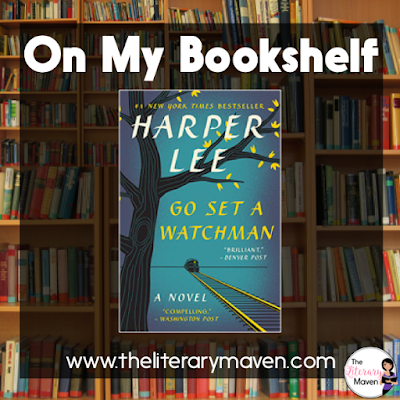Basic plot from Amazon: Humans and androids crowd the raucous streets of New Beijing. A deadly plague ravages the population. From space, a ruthless lunar people watch, waiting to make their move. No one knows that Earth's fate hinges on one girl. . . .
Cinder, a gifted mechanic, is a cyborg. She's a second-class citizen with a mysterious past, reviled by her stepmother and blamed for her stepsister's illness. But when her life becomes intertwined with the handsome Prince Kai's, she suddenly finds herself at the center of an intergalactic struggle, and a forbidden attraction. Caught between duty and freedom, loyalty and betrayal, she must uncover secrets about her past in order to protect her world's future.
Why I liked it: Cinder is a mix of science fiction and fairy tale. The futuristic genre is not usually my genre and even a few pages into Cinder, I wasn’t sure I was going to keep reading with all the talk about androids and cyborgs. Imagining Iko, Cinder’s trusty sidekick, as a Wall-E like robot helped warm me up.
Classroom application: The novel, Book One of the Lunar Chronicles, could be compared with other Cinderella stories such as The Rough Faced Girl or The Paper Bag Princess or paired with other texts, fiction or nonfiction, that focus on the theme of beauty.
Cinder, a gifted mechanic, is a cyborg. She's a second-class citizen with a mysterious past, reviled by her stepmother and blamed for her stepsister's illness. But when her life becomes intertwined with the handsome Prince Kai's, she suddenly finds herself at the center of an intergalactic struggle, and a forbidden attraction. Caught between duty and freedom, loyalty and betrayal, she must uncover secrets about her past in order to protect her world's future.
Why I liked it: Cinder is a mix of science fiction and fairy tale. The futuristic genre is not usually my genre and even a few pages into Cinder, I wasn’t sure I was going to keep reading with all the talk about androids and cyborgs. Imagining Iko, Cinder’s trusty sidekick, as a Wall-E like robot helped warm me up.
Like the original Cinderella, Cinder lives with her
stepmother and two stepsisters. Her stepmother Adri is unkind and uncaring, her
eldest stepsister Pearl is self-centered and has little interest in Cinder, but
her younger stepsister Peony treats her as a friend and confidante. Cinder’s
real parents died long ago and her adoptive father, Adri’s husband is also
deceased.
Prince Kai is hosting a ball for all the ladies in the
kingdom, but we first meet him at the market where Cinder works repairing
androids and other electronics. Kai’s personal android is malfunctioning and
seeks Cinder’s help fixing it because of her reputation as an expert. The two’s
paths continue to intersect as the novel continues and they develop feelings
for each other, but Cinder keeps him at a distance, fearing he will discover
that she is cyborg, part human and part robot.
For Kai, more important than the excitement about the ball
is his quest to save his father, the emperor, who has been infected by the
plague that is sweeping through the city. Cinder’s close relationship with
Peony makes it all the more devastating when Peony comes down with the plague
shortly before the annual ball. Cinder feels responsible for her stepsister’s
infection, fearing she may have brought the disease home with her from the
market, where a nearby shopkeeper showed signs of the infection earlier that
day.
Adri volunteers Cinder as a test subject for a vaccine for
the plague, but it turns out that she is immune. While Cinder is furious with
Adri, she also desperately wants to save Peony. The doctor running the trials
is a suspicious character; it’s not until the end of the book that you are sure
whether you can trust him or not, but he offers to pay Cinder in exchange for
studying her.
The ending of the novel leaves you hanging and eager to read
the next book in the series.
Classroom application: The novel, Book One of the Lunar Chronicles, could be compared with other Cinderella stories such as The Rough Faced Girl or The Paper Bag Princess or paired with other texts, fiction or nonfiction, that focus on the theme of beauty.
Following reading Cinder, as a writing assignment, students
could choose another fairytale to set in the future and analyze how the change
in setting would affect the plot.
If you are interested in purchasing a copy of Cinder for yourself, you can find it on Amazon here.
Note: The Literary Maven is a participant in the Amazon Services LLC Associates Program, an affiliate advertising program designed to provide a means for sites to earn advertising fees by advertising and linking to amazon.com.






















